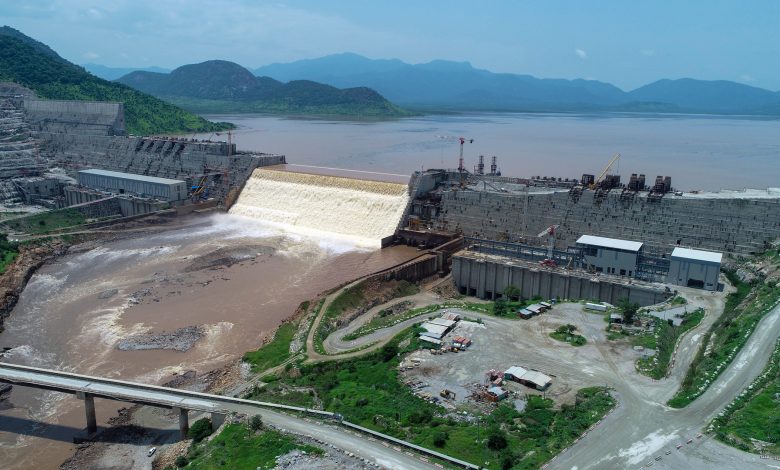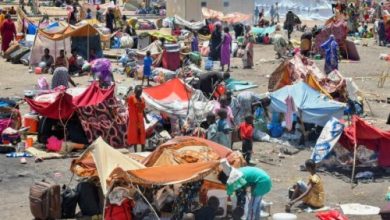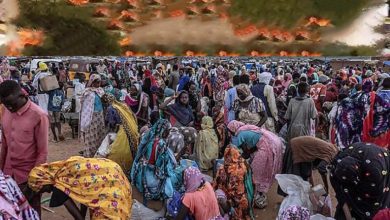Reports
Does the Ethiopia Earthquake Threaten the Grand Ethiopian Renaissance Dam? Sudanese Minister Explains

Sudan Events – Agencies
In recent hours, shocking videos from Ethiopia have spread across social media, showing thick columns of smoke rising ominously from deep fissures in the ground, as earthquakes and tremors of significant intensity reveal unprecedented occurrences.
These unusual scenes, which swept across Ethiopia, have sparked panic and revived old nightmares about the possible collapse of the Grand Ethiopian Renaissance Dam (GERD).
As a result of the series of earthquakes that struck the Ethiopian Plateau, including a powerful 5.8 magnitude earthquake in the capital, Addis Ababa, on Saturday morning, legitimate questions have arisen about the potential impact of these ongoing tremors on the massive dam.
Is the Dam on the Verge of Collapse?
Concerns have grown about the potential explosion of this colossal water barrier that holds back a massive lake covering 1,800 square kilometers, with a height of approximately 600 meters. Imagine, in a single moment, the “water mountain” exploding, releasing 74 billion cubic meters of water, which would flood the lowlands with devastating force, destroying everything in its path.
As the frequency of earthquakes has increased by 800%, the question has shifted from “Will the dam break?” to “When will it happen?”
The Truth Behind the Fears
In response to these growing concerns, Dr. Osman Al-Toum, the former Sudanese Minister of Irrigation and Water Resources, spoke with “Al Arabiya.net” and dismissed the fears, stating that talk of the dam’s threat is exaggerated.
He explained that the East African Rift, which runs through Ethiopia 500 kilometers from the capital, does not pose any direct threat to the dam, which is located more than 1,000 kilometers to the west.
Dr. Al-Toum further clarified that scientific studies conducted by the Seismology Institute at Addis Ababa University showed that the area where the dam is situated has unprecedented geological stability, with no significant seismic activity recorded for over 50 years. He emphasized that linking recent tremors to the dam’s risks is an exaggeration, as scientific evidence disproves such speculations.
Geological Stability
He pointed out that the vast distance between the dam and the East African Rift makes any seismic impact on the dam highly unlikely. He cited the High Dam in Egypt, which stores 162 billion cubic meters of water and has remained stable despite numerous earthquakes in the region. He also referenced Turkey’s Ataturk Dam, which withstood a devastating earthquake nearby, demonstrating that massive dams can endure powerful seismic events.
Additionally, he explained that the design of large dams does not rely on chance but takes into account all possible seismic scenarios, ensuring that they can withstand even the most intense earthquakes.
In conclusion, Dr. Al-Toum stated that the idea of the GERD collapsing due to earthquakes is an unfounded exaggeration. The area where the dam is located has geological stability, and the dam’s engineering design enhances its ability to withstand natural disasters, making these fears far removed from reality.
What is the East African Rift?
The East African Rift is one of the greatest geological phenomena in the world. It extends as a vast network of fissures across the African continent, with Ethiopia being a central point in this immense system.
The Rift starts in the northeast from the Red Sea and stretches down to the East African lakes in the south, forming the heart of ongoing geological activity.
In Ethiopia, this activity is exemplified by active volcanoes in the Danakil region in the east. The “Ethiopian Rift” is a crucial part of this ongoing geological transformation.
This region is not just a geological phenomenon; it has a history of profound changes, with tectonic plate movements creating large cracks and gaps in the Earth’s crust.
These transformations are accompanied by continuous volcanic and seismic activity, making the East African Rift one of the most geologically active places in the world. However, its impact is not limited to geology alone; it also creates diverse natural environments, from vast plains to towering mountains and deep lakes, making this region a haven for numerous unique plant and animal species.



